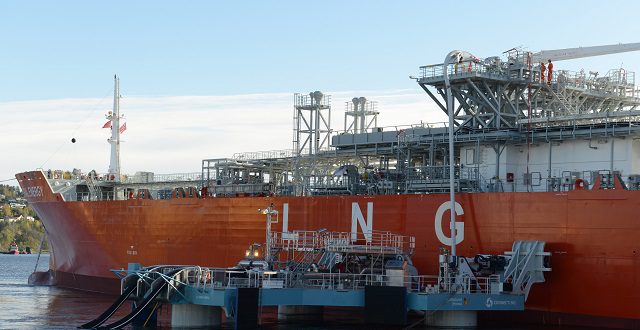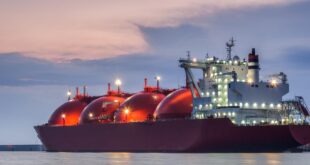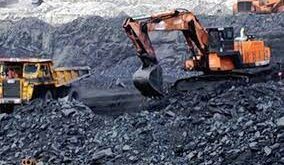In all of the problematic trade talk between Washington and Beijing. and with mounting concerns that Trump’s tariff plans could cause such a backlash that China would even consider ditching U.S.-sourced LNG and shale oil imports. relief for many Alaskans came late Tuesday night.
Alaska Gasline Development Corp. (AGDC) officials said that Bank of China and Goldman Sachs have agreed to serve as the global capital coordinators for the Alaska LNG project. State-owned AGDC became the sole remaining project partner after ExxonMobil. ConocoPhillips. and BP pulled out of the project in 2016.
`Bank of China and Goldman Sachs are well positioned to provide AGDC with world-class institutional knowledge and resources required to arrange the equity and debt financing to build Alaska`s natural gas infrastructure and LNG export project.` Keith Meyer. the president of AGDC. said in a statement.
The necessary funds will likely be raised in multiple rounds. which will include offerings to Alaska residents. Alaska municipalities. Alaska Native Corporations. and private equity sources. both investment banks and AGDC said.
Initial equity will also be raised to meet AGDC’s working capital requirements. while subsequent funding rounds will be used to finance the full-scale development of Alaska LNG once the project has received all necessary approvals.
In November. during Trump’s trade mission to Beijing. AGDC signed an informal agreement with Bank of China and Chinese state-owned oil major Sinopec Group to advance discussions on the potential of LNG in Alaska. However. at the time. the agreement was criticized due to its non-binding nature.
Making progress
Tuesday’s development also comes just a little more than a week after Alaska Gov. Bill Walker. who was part of Trump’s trade entourage to China in November. announced that the Federal Energy Regulatory Commission (FERC) had set a timeline for the project to receive its final environmental impact statement by December 2019.
Walker said at the time that the FERC timeline sets the project on a firm path toward completion. `This is a major step forward that establishes clarity and predictability in the federal permitting process. which is critical for investors.` he said. Walker also recently announced a trade mission to China set for May.
Meanwhile. adding another variable in the equation. earlier this week U.S. Commerce Secretary Wilbur Ross aid that one way China could help offset the huge trade imbalance between the Washington and Beijing would be to buy more U.S.-based LNG.
For its part. the Alaska LNG project. with an estimated CAPEX of some $45-$65 billion. which is now several years old and likely needs to be revised. will be a massive undertaking. The project requires accompanying infrastructure to become operational. including a cost intensive 800-mile. 42-inch natural gas pipeline to be built from the North Slope to Nikiski. on the Kenai Peninsula. where a large gas liquefaction plant would be built. The project also involves a large gas treatment plant built on the North Slope to treat the raw gas before it’s shipped by pipeline. The project has earmarked North Asia as its intended market.
Perfect timing?
Moreover. if the Alaska LNG project finally gets the necessary government approvals and financial backing. it will likely see first gas export by the mid part of the next decade – perfect timing for global LNG markets. which could actually be undersupplied by then.
The reason is simple. The two-year downturn in global oil and gas prices caused LNG project postponements and cancellations across the sector. leading to a possible shortage of the super cooled fuel by around 2023 or soon thereafter. This shortfall in new project proposals due to the two-year period of weak oil and gas prices. as well as exponential gas demand in China. and soon in South Asia (India. Pakistan. and Bangladesh) and Southeast Asia (Vietnam. Thailand. and the Philippines) will put further strain on future LNG supplies.
Royal Dutch Shell holds similar views. Last month. the oil major stated that based on current demand projections. it sees potential for a supply shortage developing in mid-2020s unless new LNG production project commitments are made soon.
HSBC said in a new report released earlier this week that it expects global LNG demand to grow at 4.5 percent year. translating into demand growth of 50 percent by 2025. with consumption reaching some 425 million mt year from last year`s level of some 280 million mt.
 Iran Energy News Oil, Gas, Petrochemical and Energy Field Specialized Channel
Iran Energy News Oil, Gas, Petrochemical and Energy Field Specialized Channel




